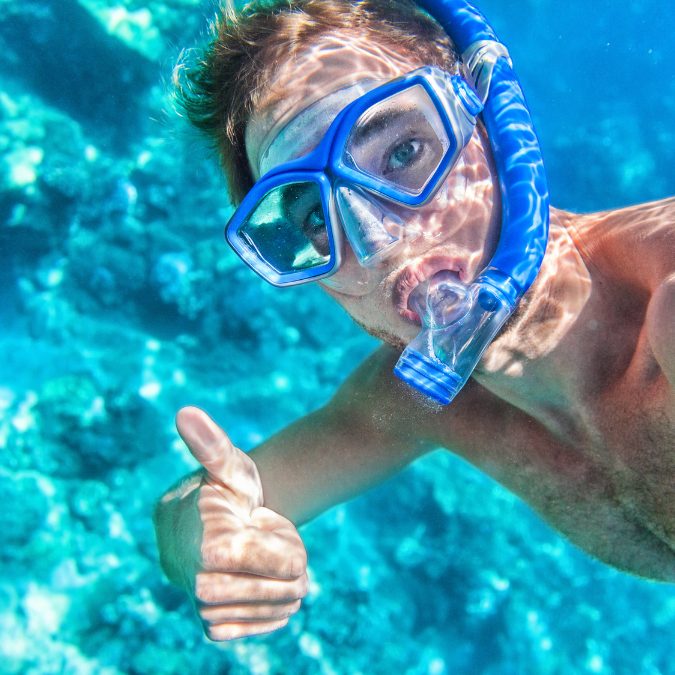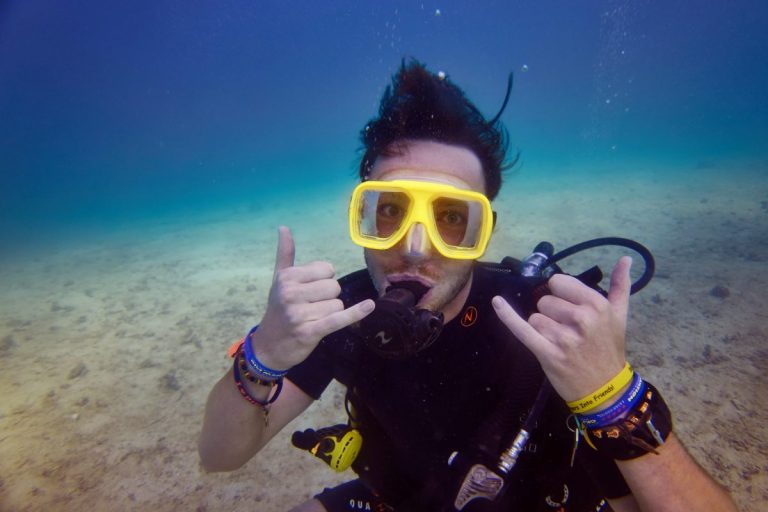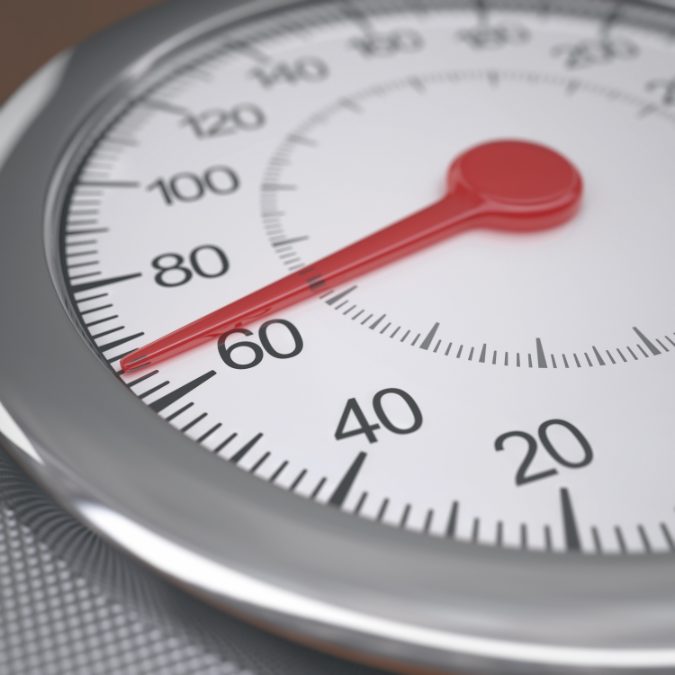How Long Does A Scuba Diving Tank Last For? (Lifespan)
Have you ever wondered how long does a scuba diving tank last for?
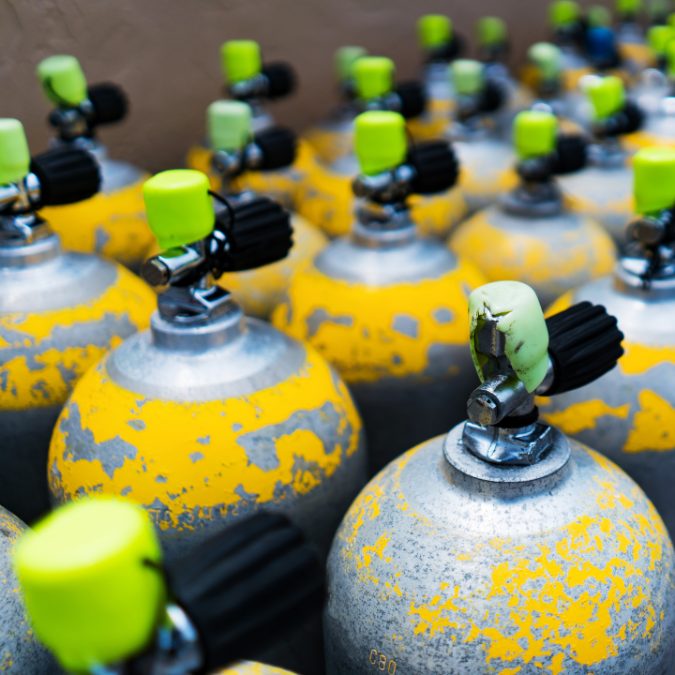
Scuba diving, a captivating exploration of the underwater world, relies heavily on the lifeline of a diving cylinder, commonly known as a scuba tank. Whether you’re a seasoned diver or a curious newcomer, understanding the lifespan of your tank is crucial for a safe and enjoyable diving experience.
In this blog post, we’ll delve into the intricacies of scuba tank longevity, covering various types, factors affecting their duration, and tips for ensuring your tank stands the test of time.
1. Types of Scuba Tanks: Aluminum vs. Steel
Scuba tanks, essential life-support systems for underwater exploration, offer divers a choice between two primary materials: aluminum and steel. Each material presents distinct characteristics that cater to different preferences and diving requirements. Aluminum tanks, renowned for their widespread popularity in recreational diving circles, stand out for their lightweight nature. This attribute proves particularly advantageous for divers engaging in leisurely dives where ease of handling is paramount.
On the other hand, steel cylinders emerge as the preferred choice among technical divers who prioritize durability and robustness in their equipment. Technical diving, characterized by its complex and challenging nature, demands equipment that can withstand rigorous conditions, making steel cylinders the material of choice for divers pushing the boundaries of underwater exploration.
The decision between aluminum and steel is not solely based on the inherent qualities of the materials but is often influenced by a diver’s personal preferences, chosen dive style, and specific needs. Recreational divers, seeking a balance between maneuverability and air capacity for relatively straightforward dives, may find the lightweight and buoyant nature of aluminum tanks ideal.
This characteristic becomes particularly advantageous during surface intervals and while transporting equipment to and from dive sites.
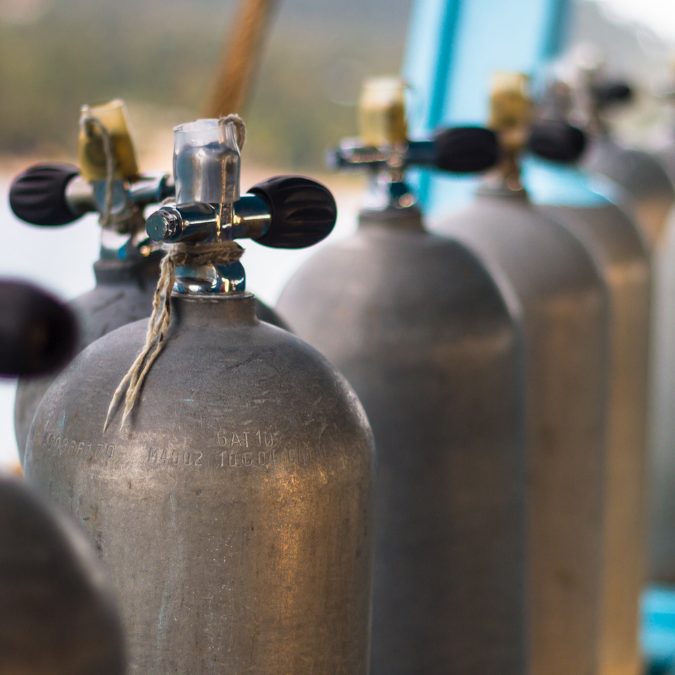
2. Tank Size Matters
The size of the tank significantly influences how long your scuba tank lasts underwater. Larger tanks, such as the standard aluminum 80-cubic-foot tank, generally provide a longer dive time compared to smaller tanks. The tank’s cubic feet of air, pressure rating, and the diver’s breathing rate all play vital roles in determining the duration of your dive.
3. Dive Time and Depth of the Dive
The depth of the dive directly affects the amount of air consumed. Recreational divers often adhere to no-decompression limits, while technical divers may engage in deeper, longer dives. Understanding your decompression limit, dive time, and the diver’s depth is essential for planning a safe and enjoyable underwater excursion.
4. Visual Inspection and Hydrostatic Testing
Regular visual inspections and hydrostatic testing ensure your scuba tank remains in good condition. Dive shops usually perform these checks to identify potential issues and guarantee the tank’s structural integrity. A well-maintained tank contributes to a safer diving experience.
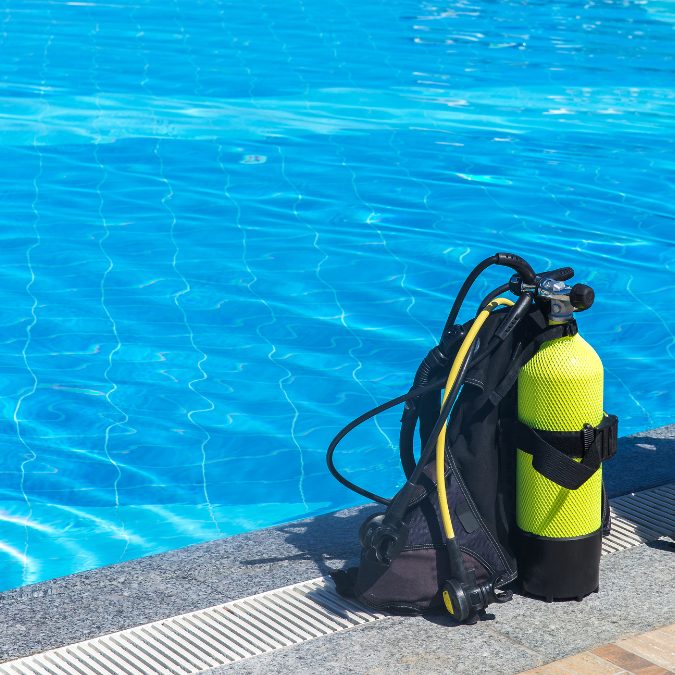
5. Factors Affecting Air Consumption
Several factors influence air consumption, including buoyancy control, the diver’s experience level, and the underwater environment. Buoyancy control is crucial for conserving air, and experienced divers often use less air than their newer counterparts. Calm waters, neutral buoyancy, and proper buoyancy control contribute to efficient air usage.
6. Dive Planning and Surface Air Consumption Rate
Proper dive planning involves calculating the surface air consumption rate, which helps estimate how much air a diver consumes per minute. This calculation is invaluable for gauging the amount of air needed for a specific dive, allowing divers to approach their underwater adventures with confidence.
7. Size of the Tank vs. Diver’s Breathing Rate
Matching the size of the tank to the diver’s breathing rate is crucial. Petite divers may find smaller tanks more suitable, ensuring they have a safe reserve of air without carrying excess weight. Conversely, larger, high-pressure tanks may be preferable for experienced divers undertaking longer and deeper dives.
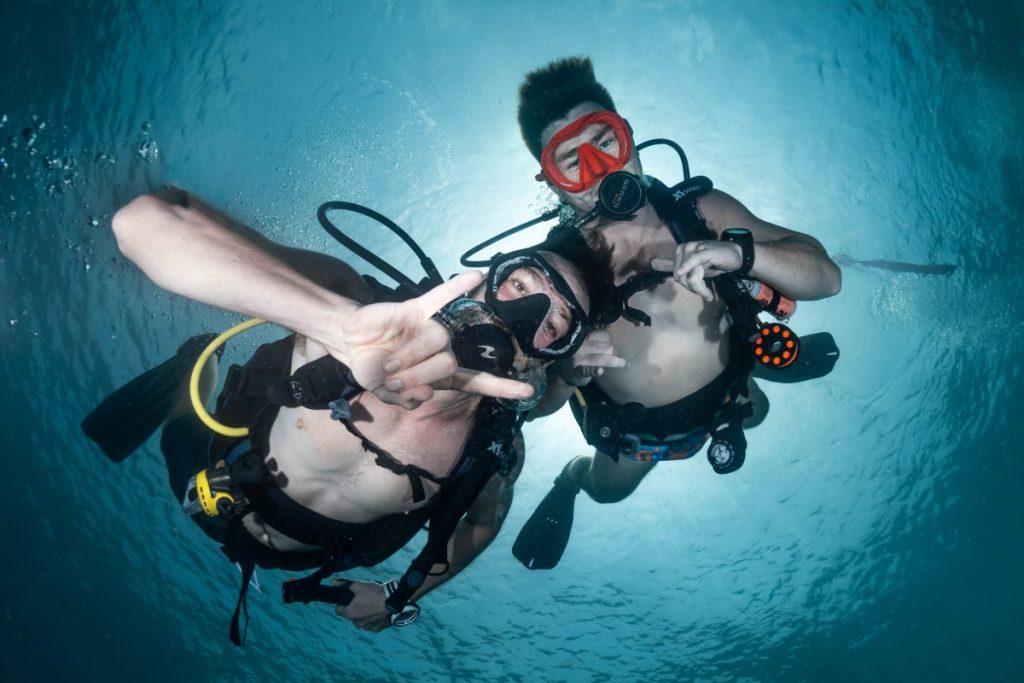
8. Fresh Water vs. Saltwater Considerations
The type of water also impacts a scuba tank’s lifespan. Freshwater is generally gentler on tanks compared to seawater, where corrosion is a concern. Regularly rinsing and storing your tank properly after saltwater dives can extend its service life.
FAQ
Q: How do steel tanks compare to aluminum cylinders in terms of longevity?
A: Steel tanks are renowned for their durability and longer service life compared to aluminum cylinders. They are an excellent choice for divers looking for extended use and reliability.
Q: As a new diver, when should I consider getting my own tank?
A: Acquiring your own tank is often a personal choice. For new divers, it becomes more practical once you’ve gained experience and become a certified diver, ensuring you are familiar with the equipment and its care.
Q: What factors influence the length of time a scuba tank lasts underwater?
A: Several factors affect the dive time, including the diver’s air supply, the pressure of the tank, and the depth of the dive. Bottom time, or the duration a diver can spend at a specific depth, is a key consideration.
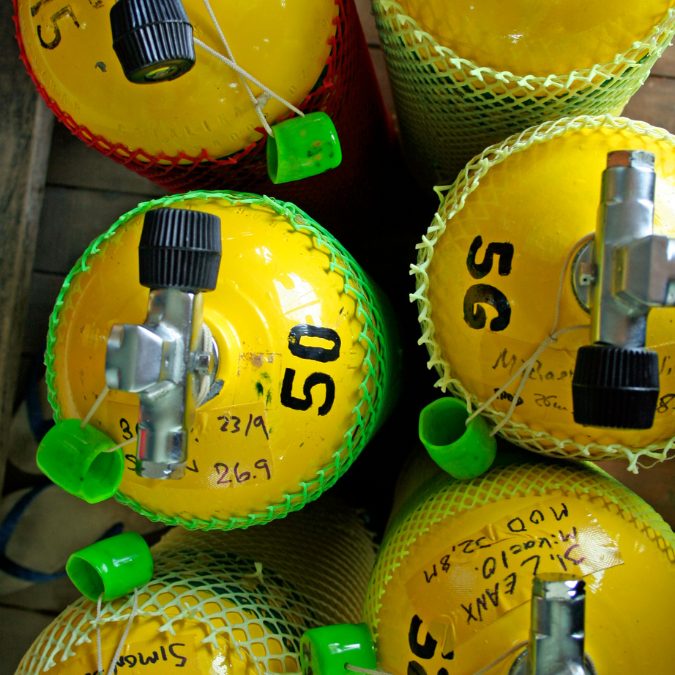
Q: Is there a simple answer to how long a scuba tank lasts?
A: The answer varies based on factors such as tank size, water pressure, and the diver’s experience level. Generally, divers should adhere to safe diving practices and monitor their air supply to ensure a safe ascent.
Q: What is the best way to gauge the remaining air in a tank?
A: Monitoring the tank pressure through the pressure gauge is the most reliable method. It provides real-time information on the amount of air remaining in the tank.
Q: What is the significance of a visual test for scuba cylinders?
A: A visual test, conducted by dive shops, ensures the scuba cylinder is in good condition. It involves inspecting the exterior for any signs of damage or corrosion and is crucial for the tank’s proper care.
Q: Are there different sizes of scuba tanks available for divers?
A: Yes, scuba tanks come in various sizes to cater to different diving needs. The size of the tank influences the total weight a diver carries and the amount of air available.
Q: What is a DIN valve, and how does it differ from other tank valves?
A: A DIN valve is a type of tank valve used in scuba diving. It differs from other valves, like the yoke valve, offering a more secure connection and is commonly preferred in technical diving.
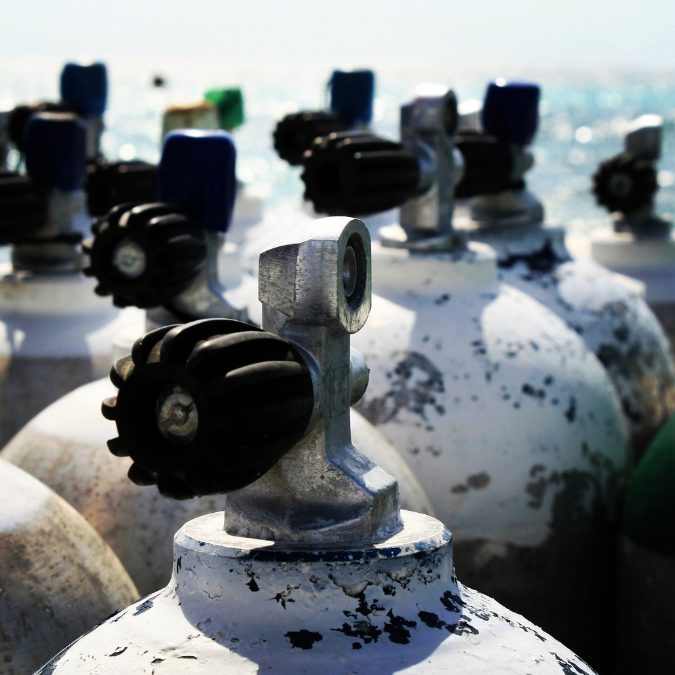
Q: Can you share some insights into technical diving and tank volumes?
A: Technical diving involves using different gas mixtures, such as air nitrox, requiring specific tank volumes. Technical divers carefully plan their dives based on gas blends and the intended dive depth.
Q: How does a pony tank contribute to a diver’s experience?
A: A pony tank, or backup tank, is a smaller cylinder carried by divers as a reserve air supply. It provides an extra safety measure, especially during technical or long dives.
Q: Is a new scuba diving tank a good choice for long dives?
A: Yes, a new scuba tank, when properly cared for and regularly inspected, is an excellent choice for divers seeking to undertake long dives. It ensures reliability and performance.
Q: Are there considerations for storing a scuba tank?
A: Storing a scuba tank in a cool, dry place, away from direct sunlight, is crucial. Using a tank boot can protect the tank’s base, preventing damage and ensuring it remains in good condition.
Q: Can you explain the importance of tank pressure during a dive?
A: Tank pressure is critical for a safe dive. Divers should regularly monitor their tank pressure to ensure they have sufficient air for a safe ascent and avoid running out of air underwater.
Q: How do different types of scuba tanks impact personal experience during a dive?
A: Personal experience can be influenced by the type of tank used. Some divers prefer the lightweight nature of aluminum tanks, while others appreciate the durability of steel tanks.
Q: Is there good news for those interested in high-pressure breathing gas during dives?
A: Yes, high-pressure breathing gas is readily available for divers, providing an enhanced and prolonged diving experience, especially for technical divers exploring greater depths.
Q: Can you elaborate on the concept of diving on the side of caution?
A: Diving on the side of caution involves conservative dive planning, ensuring adequate air reserves, and avoiding pushing the limits of the dive tables. It contributes to a safer and more enjoyable diving experience.
Q: How does a tank boot contribute to a scuba tank’s longevity?
A: A tank boot acts as a protective shield for the tank’s base, preventing damage and ensuring the tank remains in good condition. It is a simple yet effective way to extend a scuba tank’s lifespan.
Q: What role does personal experience play in gauging the amount of gas needed during a dive?
A: Personal experience becomes a valuable guide in understanding one’s air consumption rate and gauging the amount of gas needed for various dive scenarios
In Conclusion: Ensuring a Long and Enjoyable Scuba diving Tank Lifespan
In summary, the lifespan of a scuba tank is influenced by a multitude of factors, ranging from the type and size of the tank to the diver’s experience level and environmental conditions. Regular visual inspections, adherence to proper maintenance practices, and cautious dive planning are essential for ensuring your scuba tank stands the test of time.
So, whether you’re exploring the tropical waters of North America or embarking on a technical dive in armored tanks, understanding your scuba tank’s lifespan is the first step to an enjoyable and safe underwater adventure. Dive in, explore the underwater world, and make every breath count!



